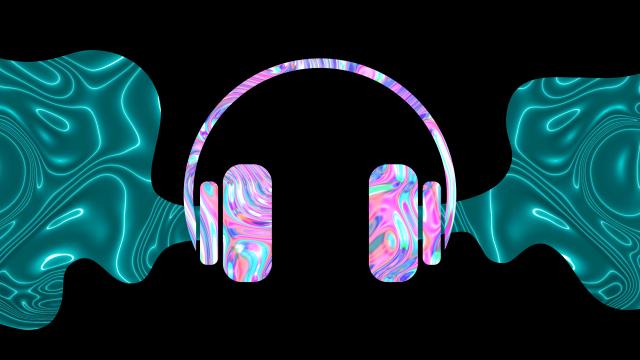OpenAI Develops AI Music Tool to Compete with Suno
OpenAI develops an AI music tool to compete with Suno, expanding into multimodal creative AI with text-to-music and video capabilities.

OpenAI Enters AI Music Race, Challenging Suno with New Generative Tool
OpenAI, the artificial intelligence research lab behind ChatGPT and DALL-E, is advancing into the realm of AI-generated music with a new product designed to compete directly with Suno, a leading startup in the text-to-music space. According to recent reports, OpenAI’s upcoming tool is expected to generate music from text prompts, and may also produce short videos based on user inputs, signaling a bold expansion into multimodal creative AI. While OpenAI has not confirmed an official launch date, industry sources indicate that development is underway and a public release could be imminent.
Background
OpenAI has rapidly evolved from a research-focused organization into a major player in applied AI, with recent launches spanning infrastructure, applications, and even a new AI-powered browser, ChatGPT Atlas. The company’s ambitions now extend into vertical content creation, including music, as it seeks to dominate both the backend and frontend of the AI tech stack.
Suno, in contrast, has emerged as a specialist in AI music generation, offering a platform that enables users to create full songs from simple text descriptions—no musical expertise required. Suno’s latest model, v5, boasts “studio-grade fidelity” and “natural, human-like vocals,” representing a significant leap over previous versions in both audio quality and user experience. The platform’s rapid iteration cycle—from v3.5’s improved song structure to v4’s vocal upgrades and v5’s complete re-architecture—has set a high bar for competitors.
Key Features and Technological Stakes
OpenAI’s new music generator is reportedly being designed to accept text prompts and output musical compositions, with additional capabilities for creating short, AI-generated videos. This positions the tool as a potential rival not just to Suno, but also to other creative AI platforms that combine audio and visual outputs. While OpenAI has not disclosed technical details, its track record with GPT-4, DALL-E 3, and Sora (for video) suggests that the music product could leverage similar transformer-based architectures, optimized for audio synthesis.
Suno’s v5 model is already pushing the boundaries of what AI can achieve in music creation. Internal benchmarks indicate that users strongly prefer v5 over previous versions, with an ELO score of approximately 1,293 compared to v4.5+. The platform supports song lengths up to 8 minutes, features natural-sounding vocals, and offers advanced customization options such as instrumental-only tracks. Suno’s API also allows developers to integrate music generation into third-party applications, further expanding its reach.
| Feature | OpenAI (Upcoming) | Suno v5 (Current) |
|---|---|---|
| Text-to-music | Yes | Yes |
| Text-to-video | Yes (reported) | No |
| Vocal quality | Not disclosed | Studio-grade, human-like |
| Max song length | Not disclosed | Up to 8 minutes |
| API availability | Not disclosed | Yes |
| Customization | Not disclosed | Instrumental, prompt control |
Industry Impact and Competitive Landscape
The entry of OpenAI into AI music generation marks a significant escalation in the competition for dominance in creative AI. Suno has enjoyed a first-mover advantage, with a rapidly growing user base drawn to its accessible, high-quality music creation tools. However, OpenAI’s brand recognition, engineering resources, and existing ecosystem could quickly shift the balance, especially if it integrates music generation into its broader suite of AI products.
Startups like Suno have demonstrated that there is robust demand for tools that democratize music production. By enabling users without formal training to create original compositions, these platforms are reshaping the music industry, potentially disrupting traditional roles for composers, producers, and even session musicians. The rise of AI-generated music also raises questions about copyright, attribution, and the future of creative professions.
Tech giants, including Google, Meta, and Apple, are also investing in multimodal AI, but none have yet launched a product directly comparable to Suno or OpenAI’s rumored offering. The speed of innovation in this space suggests that the next 12–18 months could see rapid advances, with possible mergers, acquisitions, or partnerships as companies jockey for position.
Context and Implications
The development of AI music generators is part of a broader trend toward generative AI—systems that can create original content across multiple media types. OpenAI’s potential move into music and video generation underscores its ambition to become a one-stop shop for creative AI, building on its strengths in text, image, and (with Sora) video synthesis.
For creators, these tools offer unprecedented access to high-quality production capabilities, lowering barriers to entry and enabling new forms of artistic expression. However, they also pose challenges for intellectual property regimes and traditional business models in the creative industries.
For the tech industry, the race to develop the best AI music generator is a proxy for broader competition in generative AI. Success in this domain could yield significant dividends in user engagement, data collection, and ecosystem lock-in.
For society, the rise of AI-generated music raises profound questions about authenticity, creativity, and the role of human artists. While some fear the displacement of musicians, others see an opportunity for collaboration between humans and machines, leading to new genres and forms of entertainment.
Conclusion
OpenAI’s reported development of an AI music generator sets the stage for a high-stakes battle with Suno and other innovators in the creative AI space. With both companies pushing the boundaries of what’s possible in music synthesis, the coming months are likely to see rapid advancements, increased competition, and new challenges for the music industry and society at large. As these tools mature, they will not only transform how music is made but also redefine the relationship between technology and human creativity.



